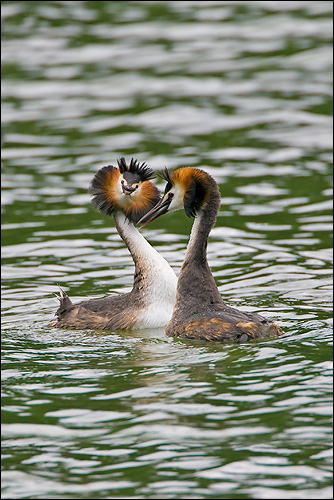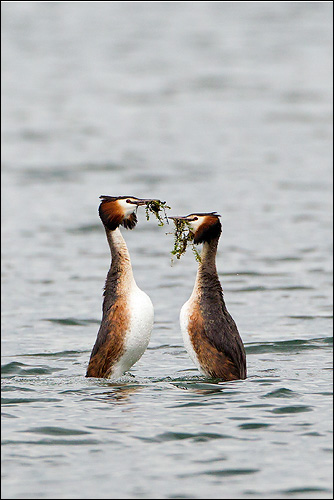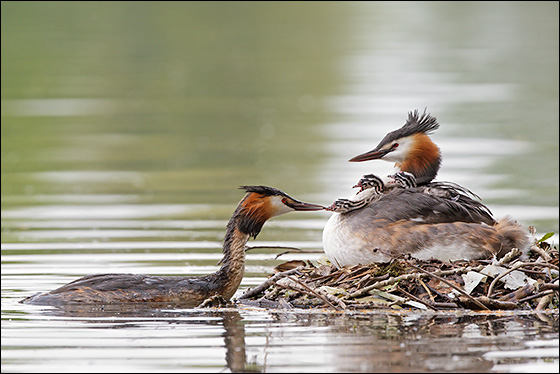Great Crested Grebe (Podiceps cristatus)
Being open-water birds, Great Crested Grebes are easy to observe, and their spectacular water-courtship formed the subject of one of the earliest in-depth studies of bird behaviour. The most common manoeuvre is “Head-Shaking” (left), in which the members of a pair face each other and shake their heads from side to side; this may be interrupted by a quick ceremonial “Habit-Preen,” in which the birds may shape as if to preen the feathers on their back, but merely ruffle them. Such motions may lead into more elaborate displays such as the Weed Ceremony, in which both sexes dive for weed, then swim rapidly towards each other and meet breast-to-breast, rearing up out of the water and shaking their heads from side to side, still holding the weed (below).
The Great Crested Grebe has a remarkably long breeding season, with eggs recorded as early as February and young sometimes seen as late as October. At least one nest is built, although subsidiary platforms may be constructed for other purposes, including copulation. The young, stripy in pattern like old-time convicts, are perfectly able to swim as soon as they hatch, but for safety and warmth will preferentially cling to either parent’s back, fitting in between the wings. They might even hold on like this during an adult’s dive.
Although newly-hatched young will often be fed by one parent while resting on the other’s back, a feature of later parenting is not teamwork but “brood-splitting”, in which each parent takes sole custody of its allotted part of the brood, ignoring the others. But occasionally older chicks from an earlier brood will also join in the feeding of young, aiding the efforts of either parent.



